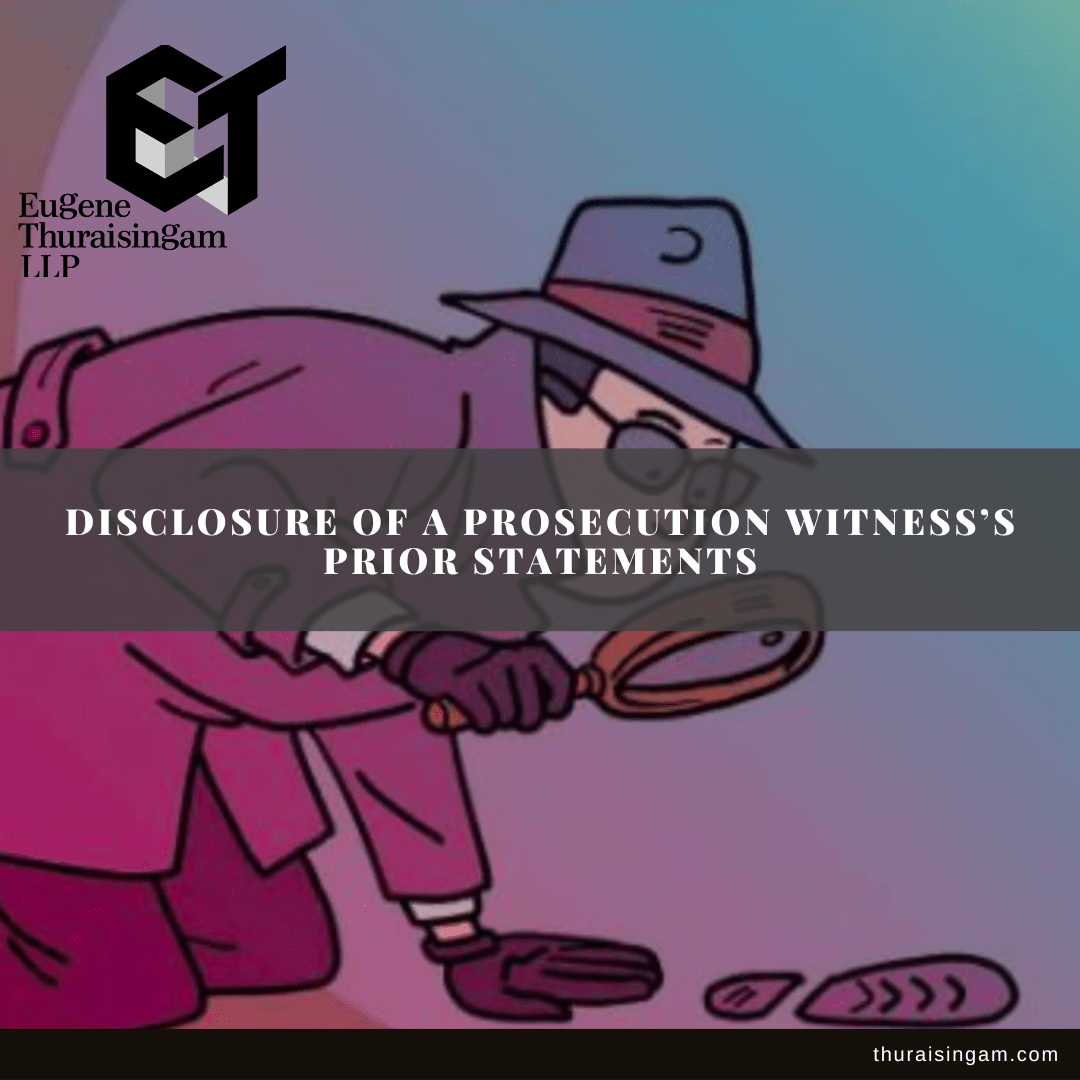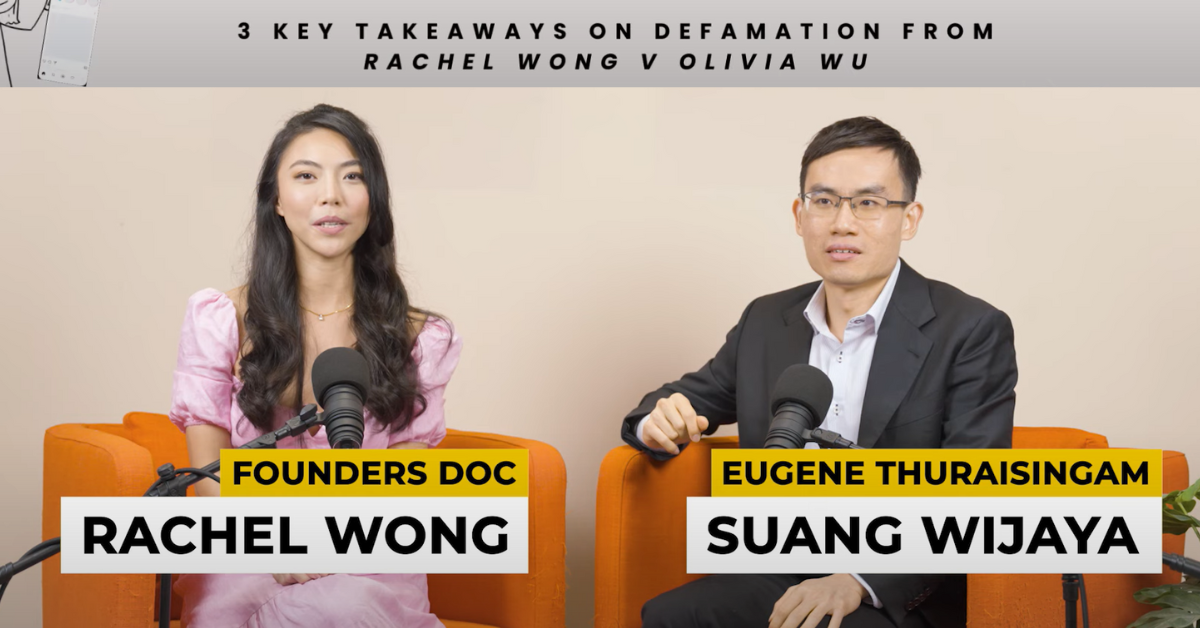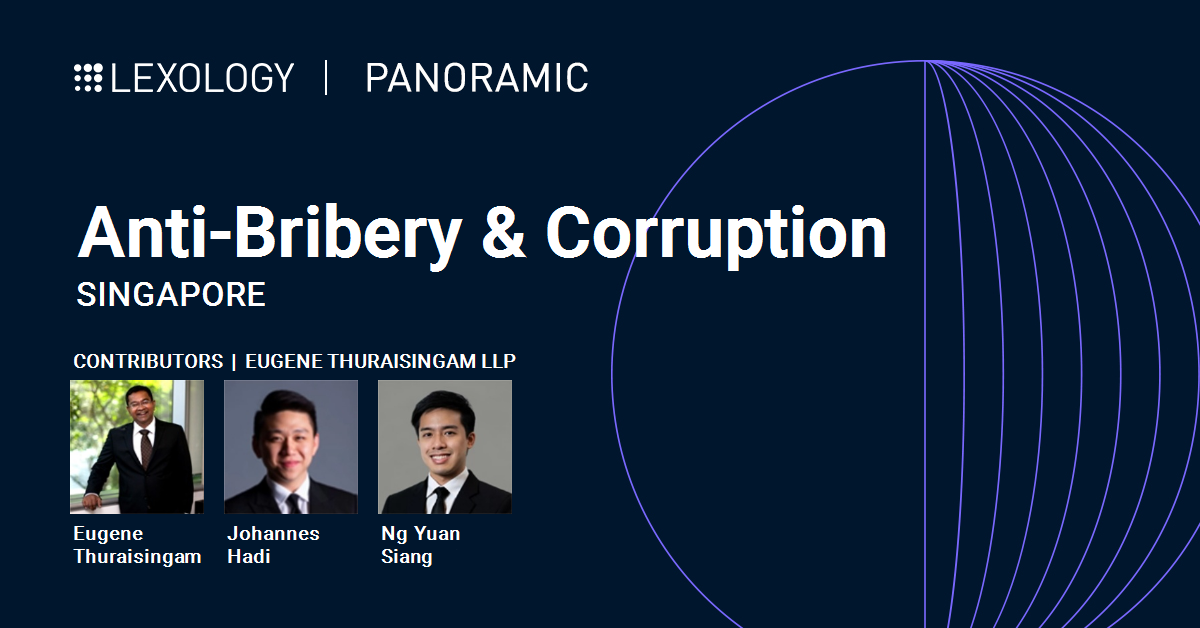Disclosure of a Prosecution Witness’s Prior Statements
A Commentary on Pigg, Derek Gordon v Public Prosecutor [2022] SGHC 5*
(Abstract: The High Court has held that a prosecution witness’s prior statements can fall within the ambit of the prosecution’s Kadar disclosure obligations even though such statements are presumptively inadmissible. Yet a prosecution’s breach of its Kadar obligations does not automatically overturn a conviction. How does the Court’s finding impact criminal discovery and defence counsels’ litigation strategy in Singapore?)
Introduction
The landscape on criminal discovery in Singapore has changed significantly since 2010 with the enactment of the criminal case disclosure provisions under the Criminal Procedure Code 2010 (CPC), as well as case law developments beginning with Muhammad bin Kadar and another v Public Prosecutor [2011] 3 SLR 1205 (Kadar).
Some time passed before the law was further developed in Muhammad Nabill bin Mohd Fuad v Public Prosecutor [2020] 1 SLR 984 (Nabill) in which the Court of Appeal held that the prosecution had a duty to disclose the statements of a material witness to the defence, even if that witness was not being called to testify by the prosecution.
However, the Court of Appeal in Nabill (at [50]) deliberately left open the question of whether the prosecution would be required to disclose the statements of a material witness, where such witness is called to testify as a prosecution witness (PW’s Prior Statements).
This issue finally came up for consideration in Pigg, Derek Gordon v Public Prosecutor [2022] SGHC 5 (Pigg) and the court in Pigg answered in the affirmative.
The holding in Pigg is another important milestone for criminal discovery in Singapore and goes some way towards levelling the playing field between the prosecution and defence. Yet, the case is also a stark reminder that a prosecution’s breach of its Kadar obligations is not a “poison pill” that will automatically overturn a conviction. In fact, the conviction in Pigg was upheld despite the court’s finding that there had been a Kadar breach by the prosecution.
Background Procedural Facts in Pigg’s Case
Pigg was charged in 2017 with eight charges under section 6(a) of the Prevention of Corruption Act 1960 for corruptly accepting a total gratification of S$270,000 from Mr Yong Hock Guan Dennis (Yong) between July 2007 and November 2009. Pigg claimed trial in the District Court where the Prosecution’s key evidence was the oral testimony of Yong.1 and the crux of Pigg’s defence was that Yong was lying.2
The District Court convicted Pigg and sentenced him to 15 months’ imprisonment and a penalty of S$270,000. The grounds of decision was issued in December 2020 and Pigg appealed against both the conviction and sentence.
In January 2021, prior to the hearing of the appeal, the Defence, relying on Nabill, wrote to the Prosecution requesting copies of statements by Yong that were recorded by the Corrupt Practices Investigations Bureau (Yong’s Statements). The Prosecution responded in February 2021, taking the position that neither Kadar nor Nabill required them to disclose Yong’s Statements to the Defence. Nevertheless, the Prosecution provided voluntary disclosure of all seven of Yong’s Statements.3
Subsequently, in March 2021, the Defence filed a criminal motion to adduce Yong’s Statements as further evidence on appeal.4 This was contested by the Prosecution who continued to maintain that there had been no breach of their disclosure obligations.5
Relevance is the First Key, Not Inadmissibility
The High Court disagreed with the Prosecution, holding that the Prosecution’s omission to disclose six out of seven of Yong’s Statements at the proceedings below constituted a breach of the Prosecution’s Kadar obligations.6 Specifically, the High Court held that these statements fell within the second limb of the Prosecution’s Kadar obligations, i.e., “any unused material that is likely to be inadmissible, but would provide a real (not fanciful) chance of pursuing a line of inquiry that leads to material that is likely to be admissible and that might reasonably be regarded as credible and relevant to the guilt or innocence of the accused”.7
In reaching its decision, the High Court considered the following:
1. Inconsistencies in Yong’s statements
The Prosecution had argued that the Defence had to first establish that Yong’s Statements “must be admissible”8 and this was accepted by the High Court which held that pursuant to section 259(1) of the CPC, Yong’s Statements were “presumptively statutorily inadmissible” 9. However, the Court went on to hold that “the inconsistencies revealed by the Statements in question opened up additional lines of cross-examination which Yong could have been subjected to, and provided a real chance of leading to admissible oral evidence from Yong which would prima facie be credible (since it would have been made under oath) and relevant (ie, having a bearing on the appellant’s guilt or innocence).”10
And while the Prosecution had argued that there was no “material inconsistency or serious discrepancy” between Yong’s Statements and his evidence in court11, the High Court held that the inconsistencies “tended to weaken to the Prosecution’s case and strengthen the Defence’s case” because they concerned details regarding Yong’s allegation that he passed bribe monies to the Pigg (i.e. an allegation that formed the actus reus of the charges against Pigg)12.The Court also held that Yong’s responses to the inconsistencies in Yong’s Statements would “prima facie have a potential bearing on whether his evidence that he gave bribes to the appellant ought to be believed or rejected.”13
2. The Defence’s case theory
Given that the Defence’s case theory had always been that Yong was lying about the payment of bribes to the Pigg, the court held that, had Yong’s Statements been available to the Defence at the proceedings below, “the appellant would have been able to capitalise on [the] inconsistencies to further discredit Yong under cross-examination or seek to impeach his credit”14.
In other words, the prima facie inadmissibility of a PW’s Prior Statements under section 259(1) of the CPC is not a bar to disclosure under Kadar. The key issue is whether the PW’s Prior Statements would be relevant to the accused person’s guilt or innocence, and such relevance can relate to (i) evidential issues such as the credibility of a PW, provided that such credibility has a bearing on the actus reus or mens rea of the charge; or (ii) the Prosecution’s or Defence’s case theory.
The case of Pigg has therefore made clear that there is a distinction to be drawn between the disclosure of such statements to the defence (governed by the Prosecution’s disclosure obligations) and the admissibility of such statements as evidence at trial (governed by the usual rules of evidence).
A Kadar Breach is Not a “Poison Pill”
Having found that the statements should have been disclosed to the Defence at the trial below, the High Court then had to decide how best to remedy the Prosecution’s breach of its Kadar obligations in this respect.
Following Lim Hong Liang v Public Prosecutor [2021] 5 SLR 626 (Lim Hong Liang), the High Court in Pigg’s case considered the following non-exhaustive list of factors15 (at [29]):
(a) the effect of the breach on the evidence against the accused;
(b) how the breach prejudiced the accused;
(c) whether steps can be, or have been, taken to remedy the prejudice caused; and
(d) the causes of the breach, including the conduct of the Prosecution.
In Lim Hong Liang, the prosecution admitted (following the release of Nabill) that it should have disclosed to the defence a police statement made by a witness who was not called to testify and a retrial was ordered before a different district judge.
Turning back to Pigg’s case, although Yong’s Statements were disclosed nearly one year after the trial concluded16 and the Defence argued that substantial prejudice would be caused if a remittal or retrial was ordered due to the long delay taken in prosecuting the case,17 the High Court held that an outright acquittal was inappropriate because Yong’s Statements “did not clearly indicate that the conviction must be unsafe” and that a witness’s credibility “must be closely scrutinised in the light of all the evidence before the court, including the witness’ explanation (or lack thereof) for the discrepancies”18. Additionally the Court held that an acquittal would only be warranted if the breach constitutes “a material irregularity which occasions a failure of justice”.19
Instead, the Court ordered that the appropriate course of action was to allow the Defence to further cross-examine Yong on the areas of inconsistencies identified. On an exceptional basis20, the Court also decided to take in the further evidence instead of remitting the matter to the trial judge to do so or ordering a retrial.21 In deciding so, the Court applied the test established in Ladd v Marshall and held that the test, and in particular the third criterion on relevance, had been fulfilled, given that Yong’s Statements fell within the ambit of Kadar.
PW’s Prior Inconsistent Statements Form Only a Part of the Evidence
Coming to the substantive appeal in Pigg’s case, after Yong was further cross-examined, the Defence argued that Yong’s credit ought to be impeached because of the contradictions between Yong’s Statements and his oral testimony.22 The High Court, first and foremost, held that even if a witness’s credit is impeached, it does not necessarily entail a total rejection of all the witness’s evidence because the Court “must carefully scrutinise the whole of the evidence to determine which aspect might be true and which aspect should be disregarded”.23
Although the Court found that Yong had given inconsistent accounts regarding whether, and how much, bribe money was paid to the appellant24 as well as the calculation of the bribe amounts25, the Court went on to hold that Yong’s credit was not impeached. This is because the Court found that the “shifts in [Yong’s] evidence only served to further incriminate himself while exculpating the appellant”26 and that the Defence was unable to show that Yong had a motive to lie and falsely implicate the appellant.27
The Court accepted the Prosecution’s submission that “Yong’s corrections to his evidence and his eventual testimony in court were not attempts to exaggerate the involvement of the appellant”, and further held that “[Yong’s] willingness to take the initiative to correct his evidence when he noticed there were mistakes, and thereby further incriminate himself in the process, is not only uncharacteristic of someone trying to downplay his own criminal liability, but also serves to demonstrate that he was trying his best to put forward the true state of affairs.”28
Thus, the appeal by Pigg was dismissed.
Considerations Moving Forward on Criminal Discovery of PW’s Prior Statements
The ratio in Pigg’s case makes clear that a PW’s Prior Statements can fall within the ambit of the Prosecution’s Kadar obligations and it may be the binding authority that defence counsel have been hoping for. Indeed, it should remain good law as it is consistent with obiter expressed by the Court of Appeal in earlier decisions29.
This continues to be another incremental development in the law following Nabill, which came almost a decade after Kadar. Whilst the courts have repeatedly observed30 that the prosecution’s duty in criminal cases is to administer justice, err on the side of disclosure when in doubt, and not adopt a strictly adversarial stance, the courts nevertheless retain a broad discretion as to the consequences following the Prosecution’s breach of its disclosure obligations (e.g. the different remedies in Lim Hong Lim and Pigg).
Given the current landscape, it is probably worthwhile for the Defence to articulate its case theory in some detail at the pre-trial stage. This can lay the groundwork for assessing requests, or applications, for the Prosecution to disclose a PW’s Prior Statements under Kadar or Nabill. The question of whether such statements may be admitted into evidence may then depend on whether the witness can be impeached pursuant to section 147 and/or section 157 of the Evidence Act 1893.
[Read: The Extent of an Accused Person’s Right to Statements and Disclosure of Evidence in Criminal Proceedings: Are the Current Rules Fair?, Disclosure of Prosecution Witnesses’ Investigative Statements]
*“Disclosure of a Prosecution Witness’s Prior Statements” was the feature article in the April 2022 edition of the Law Gazette co-authored by Mervyn Cheong of Advocatus Law LLC and Chooi Jing Yen.
Footnotes
- Pigg’s case at (6).
- Pigg’s case at (7).
- Pigg’s case at (11).
- Pigg’s case at (9).
- Pigg’s case at (15).
- Pigg’s case at (16).
- Pigg’s case at (17) – (18).
- Pigg’s case at (15)
- Pigg’s case at (27). See also Law Society of Singapore v Shanmugam Manohar (2021) SGHC 201.
- Pigg’s case at (27)
- Pigg’s case at (15)
- Pigg’s case at (24)
- Pigg’s case at (27)
- Pigg’s case at (26)
- Pigg’s case at (29)
- Pigg’s case at (9)
- Pigg’s case at (14)
- Pigg’s case at (30)
- Pigg’s case at (29), citing Lim Hong Liang at (21).
- Pigg’s case at (32)
- Pigg’s case at (31)
- Pigg’s case at (38)
- Pigg’s case at (48)
- Pigg’s case at (62)
- Pigg’s case at (68)
- Pigg’s case at (78)
- Pigg’s case at (79)
- Pigg’s case at (84)
- See AOF v PP (2012) 3 SLR 34 at (148) to (152); Nabil at (54); and Roshdi bin Abdullah Altway v Public Prosecutor and another matter (2021) SGCA 103 (Roshdi) at (133).
- See Nabil at (37) and Roshdi at (131).






